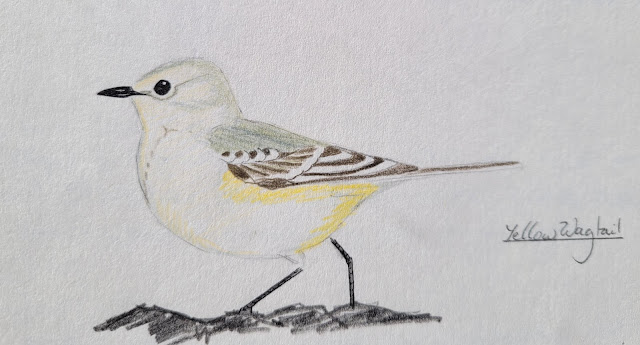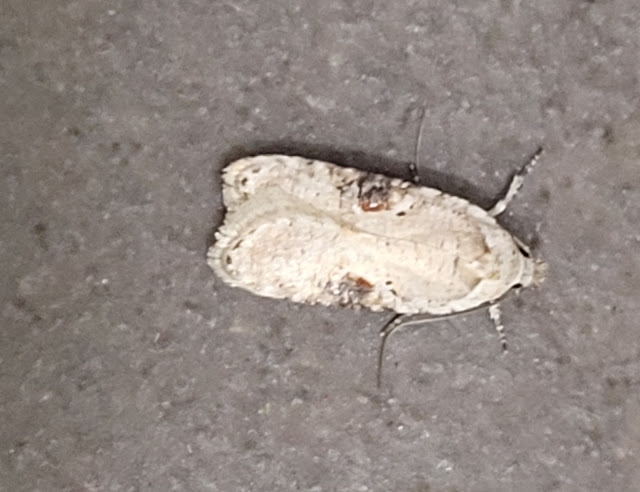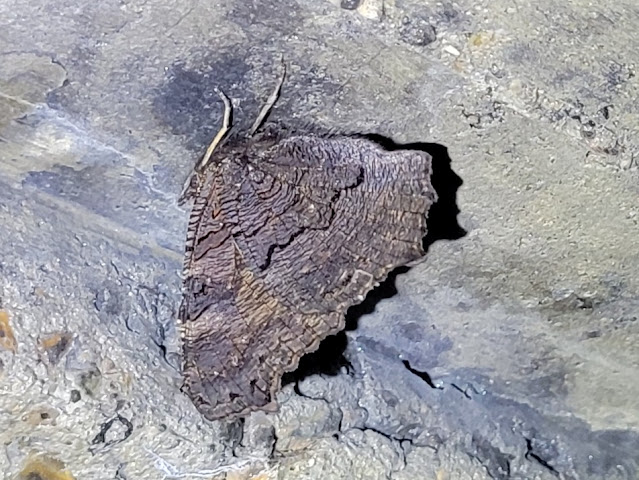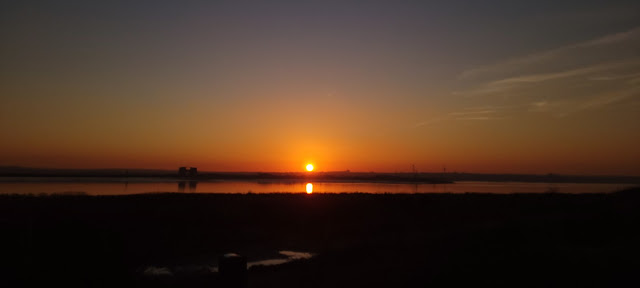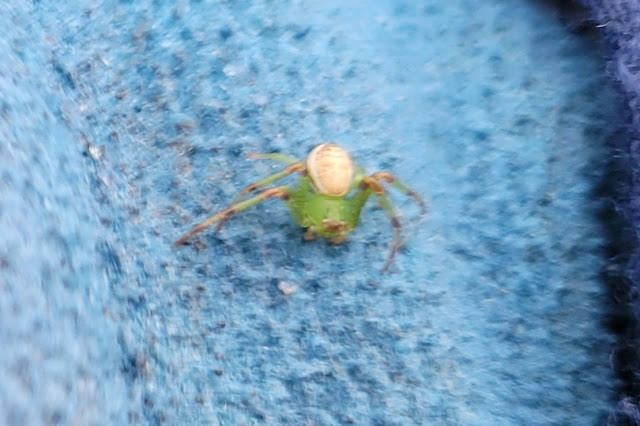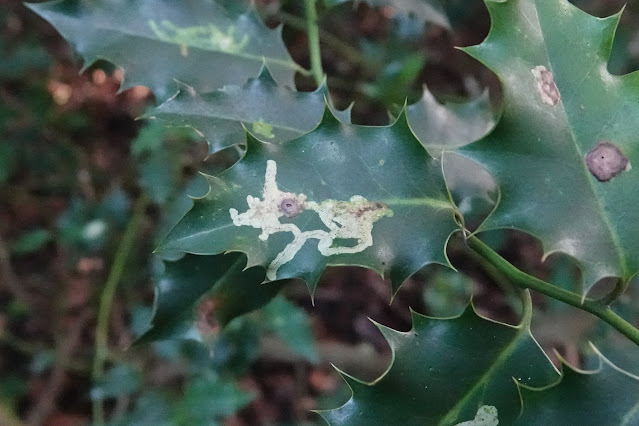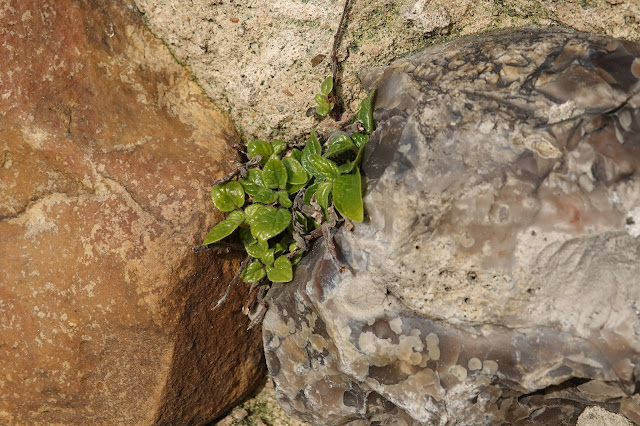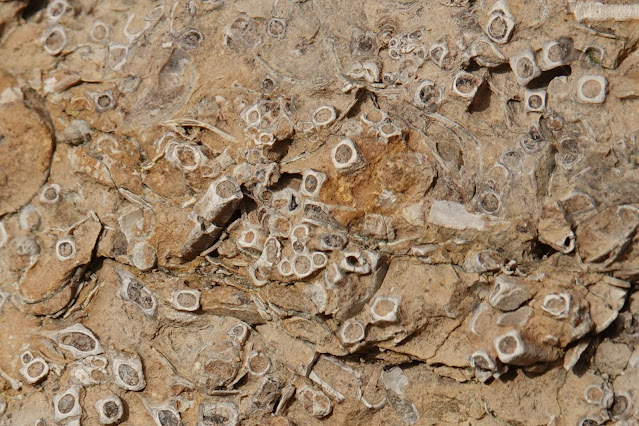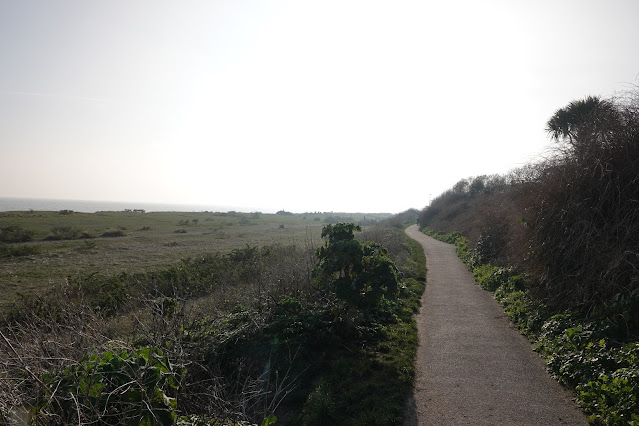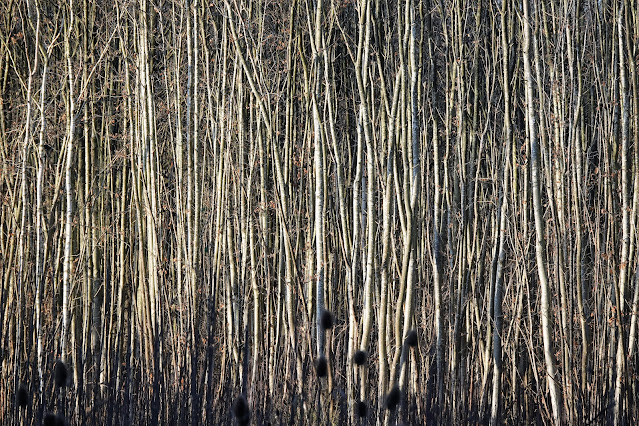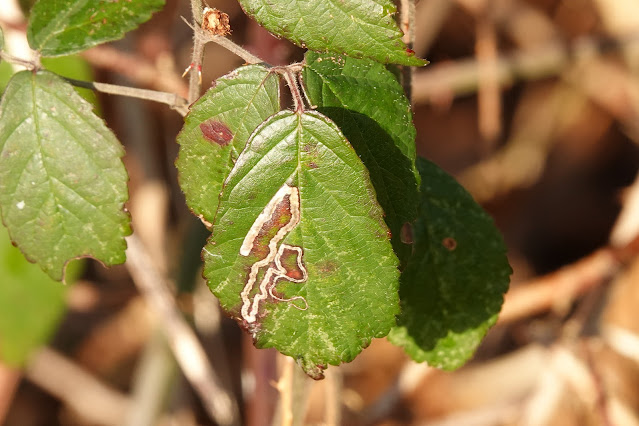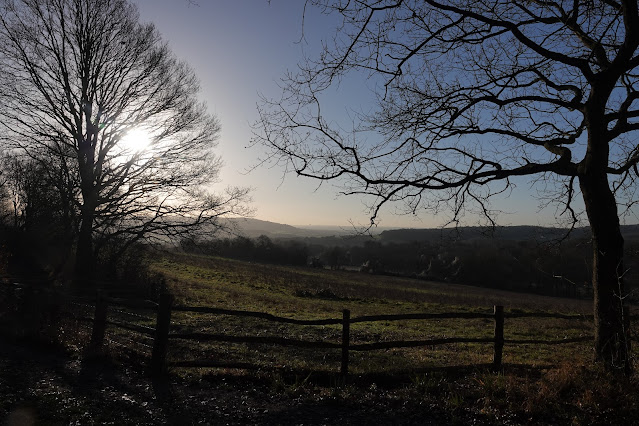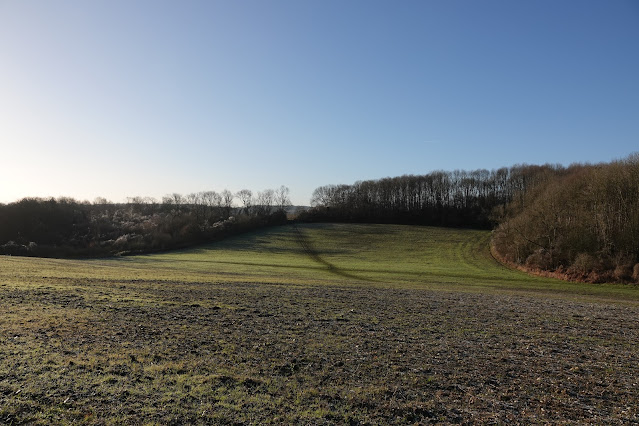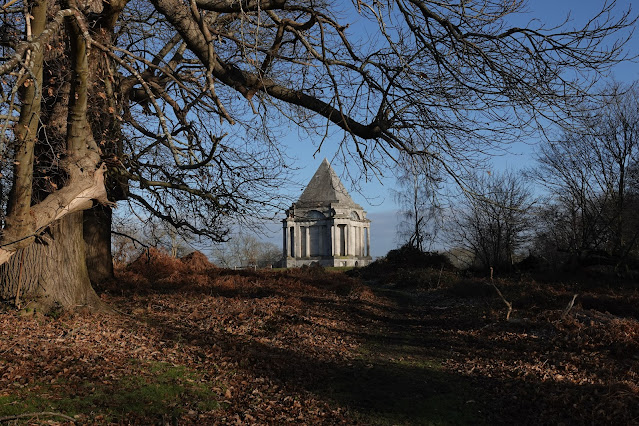1st January:
After a totally naf evening spent by myself, I got up fairly
early and dashed over The Chase which was not as productive as I had hoped
although the Long-eared Owls performed well and a Chiffchaff was a bonus. My
next stop was Connaught Water in Epping Forest where a raft of 24 Goosander was
a surprise as I poked my head around the first corner! There were a few Pochard
and Gadwall and two pair of Mandarins. The woodland was dead so I went round to
wake up Roy Woodward but he did not want to come out and play so I headed for
Seventy Acres where a pair of Smew, Goldeneye, Water Rail and Siskins were
added amongst other species.
The Great Northern Diver refused to show at Netherhall but I did see a male Pochard hybrid while up the road at Amwell the silvery Red-necked Grebe popped up just on cue. A male Pintail was a surprise but Lapwing and Snipe were more expected year ticks.
The day was ticking on so I cut across to Gernon Bushes where Treecreeper, Nuthatch and Goldcrest were added before a brief pop into
Hainault Forest where a pair of Willow Tits obliged but Woodpeckers were sadly missing from my 73 species solo effort. [Eds: Willow
Tits were holding on tenuously by then with odd pairs at Hainault, Lea Valley
and at the top end of Epping Forest and the Roding but sadly their days were
numbered…]
2nd January:
A couple of hours well spent in Duck Wood in Harold Hill
with Paul Hawkins where we saw three Hawfinches as hoped despite a guided tour by
Colin Jupp we saw no more expected woodland species although a Yellowhammer was
a year tick.
3rd January:
A quick look up at Hanningfield Reservoir in the late
afternoon revealed lots of gulls including an adult Yellow-legged and an
impressive flock of 112 Ruddy Ducks. A really impressive sight and my first
three figure flock of this enigmatic little duck.
5th January:
A slightly overcast day well spend bimbling with Pete G
along the north Kent coast. We started at Motney Hill where there were lots of
small birds along the tideline and in the bushes near the sewage works. Tree
Sparrows were milling around with finches and there were both Rock and Water
Pipits to be seen. Several Mergansers were out in the Medway and amongst the
usual waders were two Greenshanks.
A little sewage works at nearby Lower Halstow was checked
next and was full of birds on the circulating beds with three Pipits and
surprisingly three Wagtail species. The
Yellow Wagtail flew in calling and showed very nicely. [Eds: obviously now
it would just have to be an Eastern Yellow Wag – but I can remember it quite
clearly and even hear the call and it certainly looked ‘normal’!]
It was high tide at Funton Creek and there were no waders to
be seen but up the hill there was flock of Swans which contained 26 Mute, 13
Bewick’s, and single Whooper and Black!
We wiggled from here down to Shellness where year ticks came thick and
fast including many waders with Purple Sandpiper and Knot being the highlights.
There were plenty of Linnets, Twite, Greenfinches and Corn Bunting on the
saltings and a male Merlin dashed by. With nothing on the river bar a few Great
Crested Grebe and three Red-throated Diver we packed up and headed round to
Harty.
Raptors were everywhere with an adult female Peregrine being
the highlight [Eds: they were still a novelty!]. Just how many times
were have tried and failed to see this species here. She was huge and
absolutely terrified everything in sight. Much to our delight she was joined by
an immature female and they both sat next to each other in a field. At least
four ring-tail Hen Harriers floating around and two pairs of Marsh Harriers
with the former coming very close to the car.
6th January:
A pre-Polyversity stop at Picketts Lock Sports Centre gave
me good views of both the Red-necked and Black-necked Grebes present in the new
golf course while on the way home I stopped at Sewardstone and saw the
exquisite and rather nervous adult male Waxwing.
7th January:
While stuck on the way to Poly in the traffic between the
KGV and Wm Girling Reservoirs an adult Iceland Gull amazingly flew over the car
between the two sites! My fluky gull day
continued once I got home with an adult Kittiwake over my parent’s house in
Ilford!
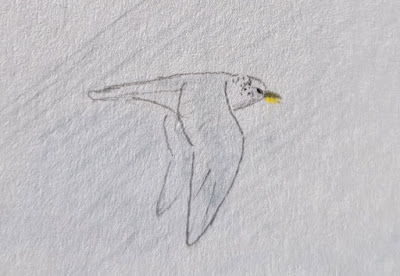 |
| Iceland Gull |
8th January:
I took Roy Woodward and Nigel Pepper for a walk round The
Chase and thankfully five Long-eared Owls were seen along with a male
Sparrowhawk.
9th January:
It was a bitterly cold and soggy day to be out in the Lea
Valley and unsurprisingly there was little to show for the effort bar a Green
Sandpiper and the head of a Jack Snipe at RSPB Rye Meads and a drake Smew and
Water Rail at Fishers Green.
11th January:
Today I took Stewart Lambert to see the Duckwood Hawfinches
and thankfully they showed well along with six Long-eared Owls at The Chase
afterwards.
12th January:
Another failed attempt with Pete G for the Seventy Acres
Bittern but we did see a fine drake and three red-head Smew. The male was displaying and attracted the
attention of a male and three red-head Goosander who likewise started to
display frantically.
Green and Great Spotted Woodpeckers were vocal and a Willow
Tit was busily searching for food up near Holyfield Lake. Water Rails were
everywhere and a female Scaup was found. Back at Picketts Lock the Grebe duo
were still bobbing around.
17th January:
Pete and I headed off for our usual Essex route and started
at Abberton Reservoir late morning [Eds: I do not thing we ever did proper
early!] We could not find the Green Winged Teal as the Teal were too tightly
packed but we did see 30 Ruff before heading off down to East Mersea. Only one Snow Bunting was heard and the flock
was missing but there were over 100 Twite in a flock drinking from puddles on
the path. [Eds: Unthinkable now…].
A Red-throated Diver, Great Northern Diver, two Mergansers,
three Eider, female Common Scoter and lots of Goldeneye were see on the Colne
before we moved around to Shop Lane were four Lapland Buntings were seen along
with numerous Twite, Corn Buntings and Skylarks. A beautiful Short-eared Owl
was quartering with Corvids in tow and soon Hen Harriers started to move about
with three ring-tails and a fine adult male. A Rough-legged Buzzard was found
perched up and eventually flew giving brief but clinching views and two more
Short-eared Owls joined in the hunting.
There was still some light ;eft so we went back to Abberton
and timed it just right as all the Teal flew and out popped the chunky
Green-winged too who proceeded to display with the other drakes. A fine way to
end the day.
 |
| Green-winged Teal |
19th January:
A strange day twitch to South Wales that actually started in
Uxbridge to see the Rockingham Ring-billed Gull once again but Stewart L was
driving and Pete G and I were just passengers! With the gull quickly bagged
(along with Kestrel and Sparrowhawk) we headed west on the boring slog to
Newgale on the Pembrokeshire coast but by 12.30 we were on the beach and watch
a flock of sixty Common Scoter bobbing just offshore and amongst them was the
fine drake American Black Scoter. He was
startlingly black and felt heavier set than the Commons and appeared to sit
higher in the water too. Obviously the huge orange yellow ‘egg’ on his bill was
the most striking feature. [Eds: Being me, I added this straight to my list but
it would take a good few years for the taxonomists to officially split it from
our species and in fact this particular bird was a big blocker for quite some
time as most birders never went for it…]
From here we headed on to Dale adding Stonechat, Fulmar, Greenshank and a brief Little Egret but with time pressing on we
forwent the Choughs to allow us time to get up for the Tregaron Red Kites. The
journey up was enlivened by numerous Ravens and Buzzards and a female Goshawk
powerfully cruised through the canopy of a plantation. Stewart was taking us to
the secret spot where the Kites are fed but we were not prepared for the sight
of 26 Kites descending onto the pile of recently put out offal. A truly
astounding spectacle especially when combined with the large numbers of Ravens
and Buzzards also present. A profound birding experience. Some of the Kites and
Ravens were colour wing-tagged. With that we started for home feeling
privileged to have seen so many of one of our rarest birds. A Tawny Owl in the
headlights as we crossed the Black Mountains rounded off a special day.
21st January:
I finished Poly early and popped down to Fishers Green with
no bins or the key to the hide on the off chance that the Bittern would be
visible just to the left hand side. I got lucky and there it was, standing with
its neck erect and swaying at the edge of the reed bed before it saw me and
stalked off.
22nd January:
On the trip to South Wales we met a birders called Steve
Bale and he was attempting a big year list and had asked if I could show him
around some south Essex sites. We started at The Chase where five Long-eared
Owls got the day off to a good start before heading to scenic Rainham where all
his targets fell quickly with Common Sandpiper, Kingfisher and two smart Water
Pipits. From here and with five ticks
under his belt we headed south of the river to Cliffe Pools where a male
Red-crested Pochard was seen on the North Quarry and a walk out to the Flamingo
Pool [Eds: it was not RSPB then and you could sort of wander wherever you
liked!] was very productive with a single Avocet [Eds: no big wintering flocks
here then…], five Pintail, 150 Black-tailed Godwits and ten Scaup to be found.
Three ring-tail Hen Harriers gave exceptional views around us and amongst the
other waders were hundreds of Knot, Dunlin, Grey Plover, Barwits and Ringed
Plover – oh and the Chilean Flamingo from which the pool acquired its recent
name.
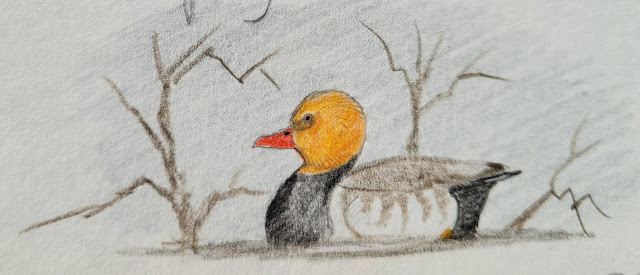 |
| Red-crested Pochard |
From here it was onto Sheppey but Shellness was a little
disappointing with just a spectacular Knot roost and a lone Slavonian
Grebe. We fared better at Capel Fleet
where a ring-tailed Hen and female Marsh Harriers were seen while a very small
agile ringtail was trying to take a Skylark from under the nose of a male
Merlin. [Eds: I seem to remember some consternation amongst local birders about
this Harrier but I can’t find anything else in my notes…] A Short-eared Owl
performed well and the Corn Buntings and same Goose selection added to Steve’s
growing year list.
23rd January:
I took Nigel Pepper down for the Bittern at Fishers Green
and thankfully it showed really well as it stalked around the reeds noisily for
half an hour with Water Rails for company.
 |
| Bittern |
24th January:
A quick walk around Connaught Water produced the impressive
sight of 22 Mandarins up on the bank grazing like Wigeon. The woods were fairly
quiet although the Lesser Spotted Woodpeckers were on territory and I got
Nuthatch at last for a year tick.
25th January:
The day was enlivened by seeing the Bittern at Fishers Green
even better than the last time! Such a beautiful bird.
26th January:
A south Kent tour for Pete and I that had some good birds
sandwiched between dipping the Gyr [Eds: or similar… cough cough] that had been
patrolling the Tenterden, Hamstreet and Dungeness area for several weeks. We
did quite well with 25 White-fronts, two Barnacles and a Taiga Bean Goose
amongst the Canadas and Greylags on the ARC. A small flock of Scaup were
sheltered against the bank while Pochard and Goldeneye braved the choppier
waters. The RSPB reserve provided me
with another year tick with a female Velvet Scoter and ten Smew included two
fine drakes.
A ring-tail Hen Harrier patrolled the edge of the pits and
did not spook anything at all and an adult Med Gull floated around. Two
Chiffchaffs were outside the hide and on looking more closely at the second
bird I noticed a Red-throated Diver hiding (dying) in the bottom of the same
bramble clump before we decided on one last fruitless attempt for the Gyr
around Appledore on the way home.
29th January:
Three Long-eared Owls were still showing nicely at The Chase
but it was the three pair of Bullfinches that stole the show that morning.

